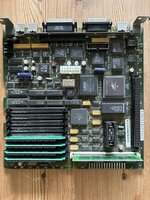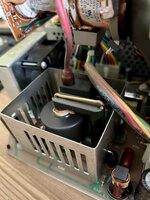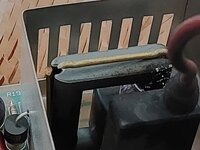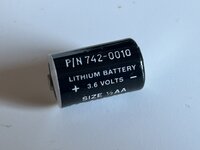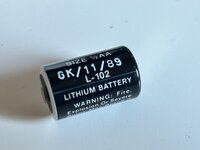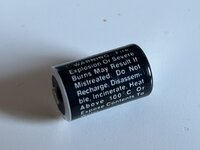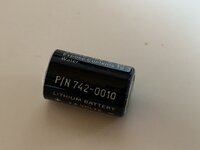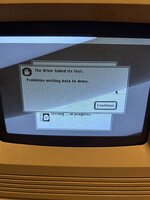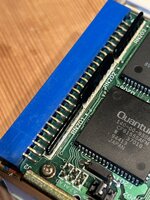Hi,
While going through the attic of my parents in law, I found two Macintosh computers, one SE/30 and one LC475. The latter one didn't want to show anything on the display at first, but after replacing the battery on the motherboard it is now up and running. The SE/30 looked more promising at first, but I haven't been able to get it to start up fully so far, which is how I found this community. I searched the forum and read some interesting posts about the SE/30, but none really covering what I'm dealing with (although I suspect that may be two different things).
When powering on the SE/30, there is a short bing/chime after which the display turns 'white' and the mouse pointer appears. A little while later a floppy disk appears with a flashing question mark in it. From what I've read in other posts, these are all positive signs, so so far so good. The startup disks of the SE/30 were missing, so I created some new ones for both OS 6.0.8 (disk 1) and OS 7.0.1 (disk Install 1 and disk Disk Tools). Inserting one of the OS 7 disks makes that the floppy disk image on the screen changes into a happy Macintosh face. However, after that one of the following two things happen: either 1) the white screen with mouse pointer appears again and the whole cycle starts again, or 2) there comes a rattling noise from the inside of the machine (see attached video) which sounds like it is coming from the floppy drive and after this a floppy disk with a cross in it appears on the screen.
I am a bit unsure what could cause these issues. I believe this SE/30 has a hard drive in it, because it has a little orange light a bit above where to insert the floppy disks, so I am wondering if the hard disk could be faulty, given that the machine does not start up without a floppy disk and does not continue with a floppy disk either. And then I am also suspecting that the floppy drive is faulty and/or dirty/stuck, causing the rattling noise. Unfortunately I do not have the proper screw driver to open the machine, so I cannot check/clean it, but will try and buy that screw driver next week (as I understand from other posts that I need to check/replace the battery for this one too).
Any thoughts on what could be wrong are very welcome, as well as other tips/hints of how to best get this machine up and running again
While going through the attic of my parents in law, I found two Macintosh computers, one SE/30 and one LC475. The latter one didn't want to show anything on the display at first, but after replacing the battery on the motherboard it is now up and running. The SE/30 looked more promising at first, but I haven't been able to get it to start up fully so far, which is how I found this community. I searched the forum and read some interesting posts about the SE/30, but none really covering what I'm dealing with (although I suspect that may be two different things).
When powering on the SE/30, there is a short bing/chime after which the display turns 'white' and the mouse pointer appears. A little while later a floppy disk appears with a flashing question mark in it. From what I've read in other posts, these are all positive signs, so so far so good. The startup disks of the SE/30 were missing, so I created some new ones for both OS 6.0.8 (disk 1) and OS 7.0.1 (disk Install 1 and disk Disk Tools). Inserting one of the OS 7 disks makes that the floppy disk image on the screen changes into a happy Macintosh face. However, after that one of the following two things happen: either 1) the white screen with mouse pointer appears again and the whole cycle starts again, or 2) there comes a rattling noise from the inside of the machine (see attached video) which sounds like it is coming from the floppy drive and after this a floppy disk with a cross in it appears on the screen.
I am a bit unsure what could cause these issues. I believe this SE/30 has a hard drive in it, because it has a little orange light a bit above where to insert the floppy disks, so I am wondering if the hard disk could be faulty, given that the machine does not start up without a floppy disk and does not continue with a floppy disk either. And then I am also suspecting that the floppy drive is faulty and/or dirty/stuck, causing the rattling noise. Unfortunately I do not have the proper screw driver to open the machine, so I cannot check/clean it, but will try and buy that screw driver next week (as I understand from other posts that I need to check/replace the battery for this one too).
Any thoughts on what could be wrong are very welcome, as well as other tips/hints of how to best get this machine up and running again

